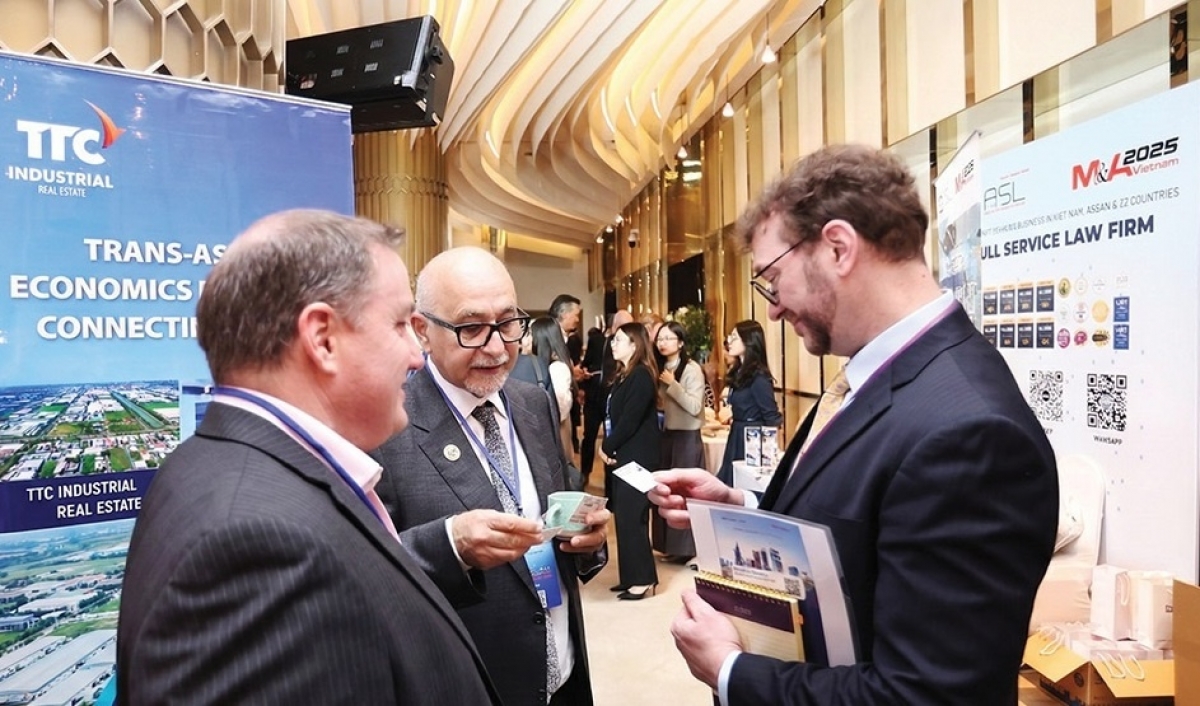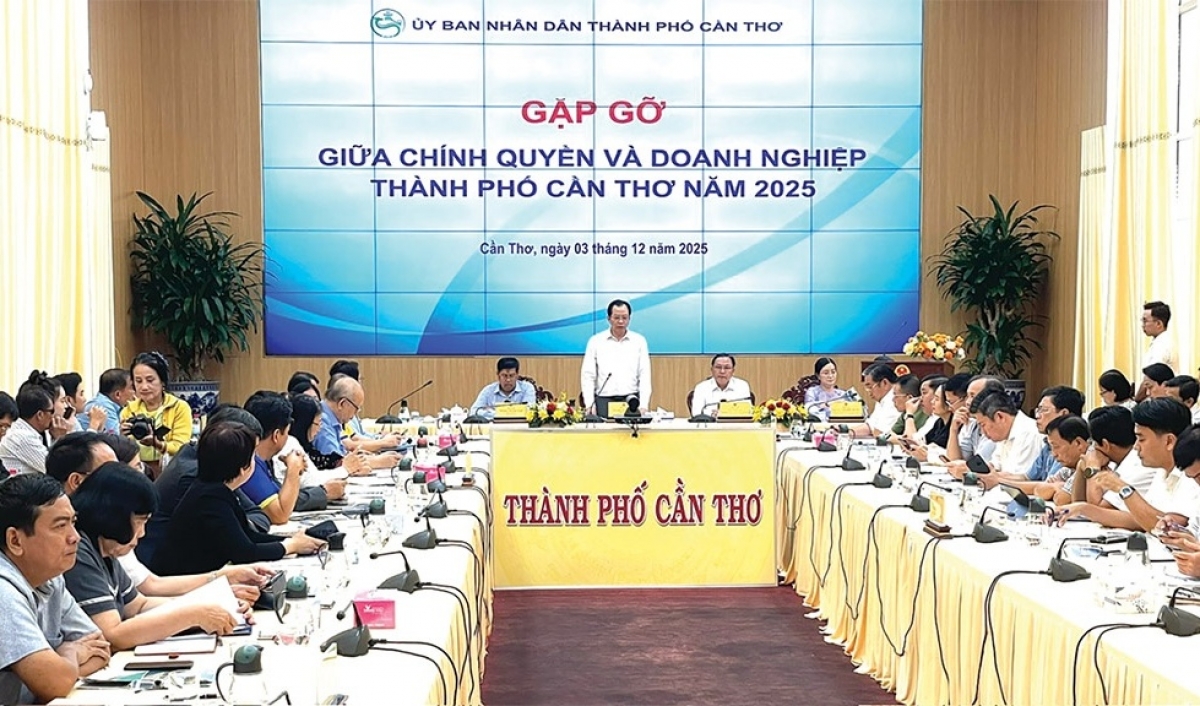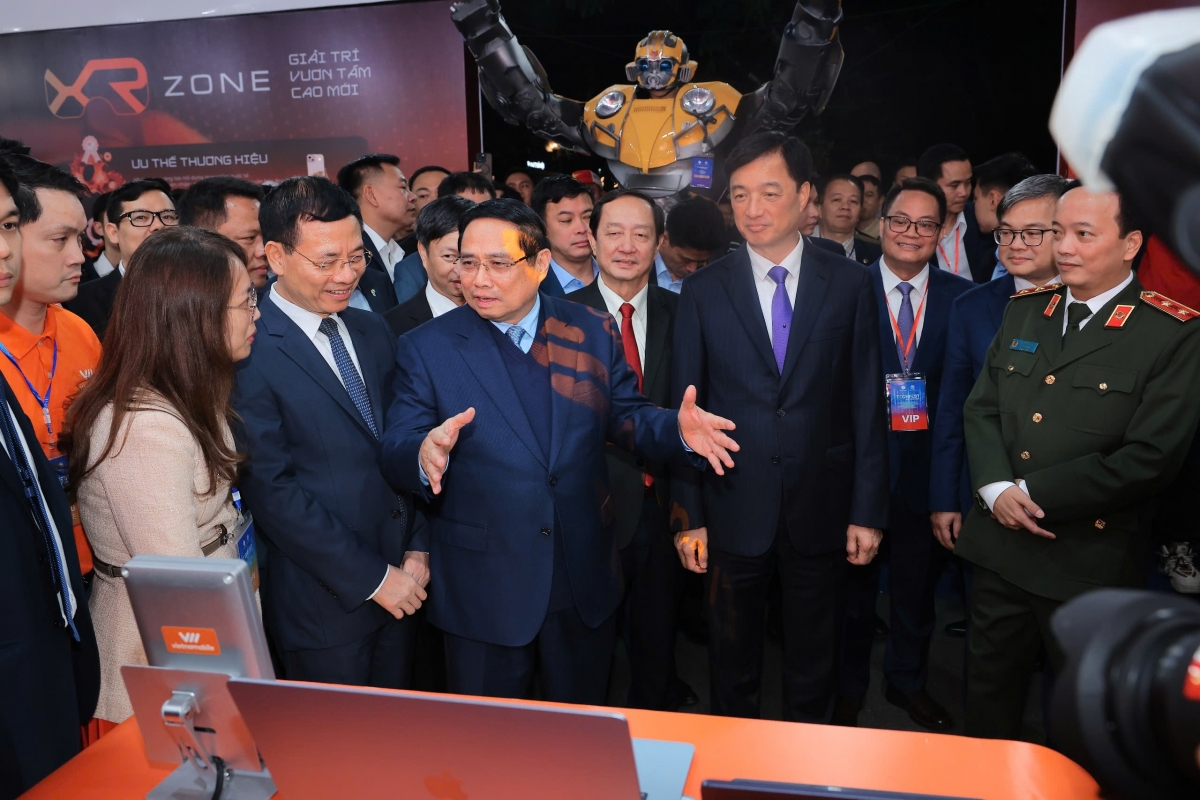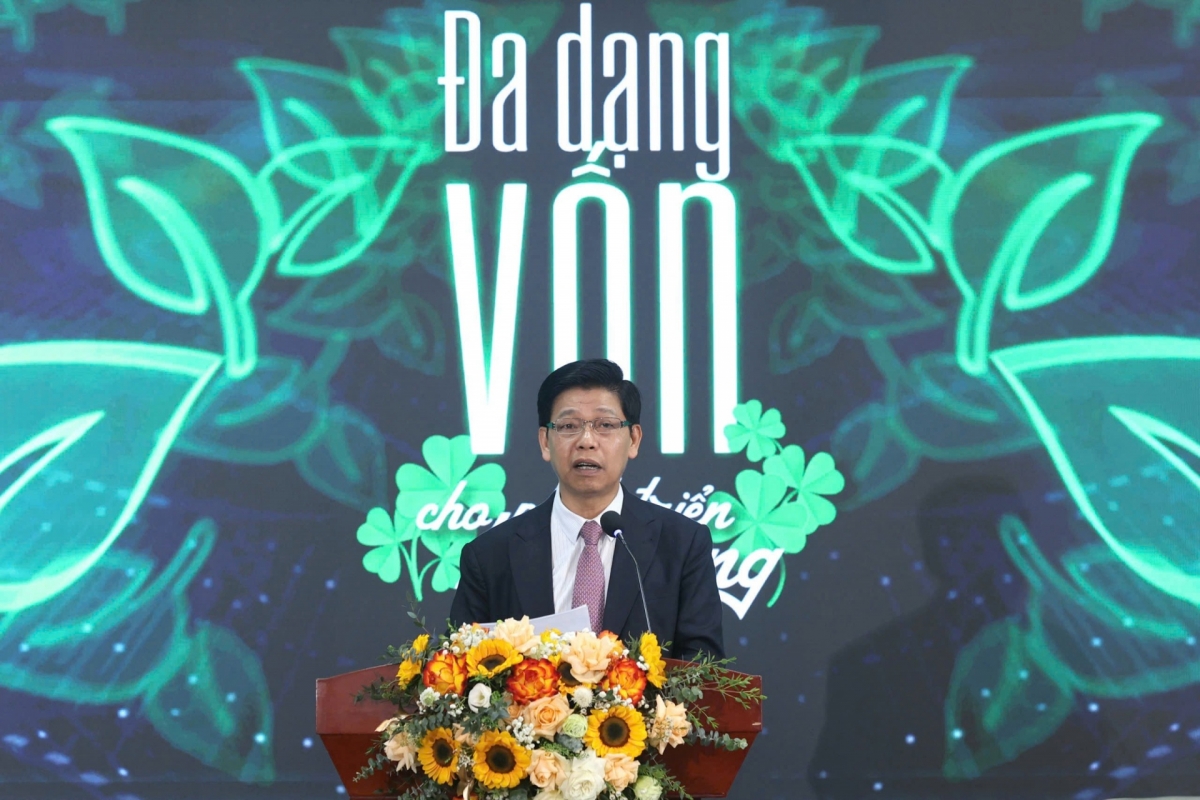INTERNATIONAL INVESTMENT
AND PORTAL
Collaboration to build a skilled workforce that meets international standards has become a concern for businesses in this sector.
At SEMIExpo Vietnam 2024, held on November 7 at the National Innovation Centre (NIC), Do Thi Thu Huong, Intel’s director of Vietnam Government Affairs, emphasised the importance of business and training institution collaboration to improve the semiconductor workforce quality. “In collaboration with training institutions, Intel can enhance the curriculum by providing input and expertise for various roles in the semiconductor industry,” she said. To date, Intel has helped train 8,000 to 10,000 semiconductor engineers in Vietnam through various initiatives.
Similarly, Le Quang Dam, general director of Marvell Technology Vietnam, emphasised the need for stronger ties between academia and industry. “We need to strengthen collaboration between universities and enterprises. Universities can supply a skilled workforce and engineers, and partner with businesses on projects utilising advanced technologies,” Dam said.
 Chip manufacturing at Intel's factory. Photo: Duc Thanh
Chip manufacturing at Intel's factory. Photo: Duc Thanh
In response to the growing demand for semiconductor talent, training institutions and businesses are launching new programmes to equip learners with practical skills. These initiatives integrate advanced technology into teaching, develop training roadmaps with strong real-world applications, and promote collaboration between educational institutions and enterprises.
Ding Ming Chee, senior director and ASEAN Customer Solution Experience at Dassault Systèmes, Asia-Pacific South, a company specialising in science and technology, told VIR, “To build a strong semiconductor workforce in Vietnam, our core strategy focuses on partnerships with academic institutions, training the workforce with cutting-edge software tools, continuous learning and certification programmes, and potential internship programmes within the industry.”
To bridge the gap between academic learning and industry demands, Dassault Systèmes offers semiconductor training solutions using its Virtual Twin Experience, which digitally replicates chip manufacturing processes, allowing learners to engage with real-time data, 3D visualisations, and process feedback. The scalable system supports a sustainable talent pipeline and has been introduced to institutions like the HUTECH Institute under the Ho Chi Minh City University of Technology and the University of Science and Technology of Hanoi.
In addition to technological solutions, Ding stressed that training collaboration is about addressing immediate workforce needs and implementing sustainable strategies to meet the long-term demands of the semiconductor industry. “Close collaboration between educational institutions, government agencies, and semiconductor businesses is essential to ensure the workforce remains agile, adaptive, and equipped to tackle the challenges of an increasingly high-tech, competitive global market,” Ding said.
Building on this approach, Dassault Systèmes is collaborating with the government to align its workforce development strategies with Vietnam’s semiconductor industry goals. In early October, the company signed an MoU with NIC to explore key areas of interest, including semiconductor sector development.
 Advanced technology is being integrated into semiconductor teaching programmes. Photo: Shutterstock
Advanced technology is being integrated into semiconductor teaching programmes. Photo: Shutterstock
Elsewhere, FPT Jetking, an educational institution with a clear roadmap for specialised skills development and strong ties with industry, is steadily aligning its training goals with the needs of businesses.
FPT Jetking, a collaboration between FPT University, a division of Vietnam's FPT technology group, and India's 77-year-old Jetking institution, launched its semiconductor design programme in May, aligning with Vietnam's growing appeal to international investors like Samsung, Qualcomm, and Amkor.
Tran Huong, head of communications and corporate cooperation at FPT Jetking, told VIR, “We target second- and third-year students majoring in electronics and telecommunications, those with foundational knowledge. At FPT Jetking, they engage in hands-on learning, focusing on tools and real-world challenges faced by businesses. Our programme is optimised to suit the current market and business needs.”
The semiconductor design programme at FPT Jetking includes 70 per cent practical training, with instructors providing direct, hands-on guidance. The curriculum focuses on essential skills such as programming, and the use of tools for electronic design automation, system-on-chip design, and VLSI design.
In addition to its industry-focused curriculum, FPT Jetking collaborates with IT, high-tech, and semiconductor companies to link students with businesses through company visits, office tours, and industry seminars. Huong noted that these activities offer students insights into workforce demands, essential skills, and emerging technology trends, enabling them to gain a clearer understanding of the industry.
FPT Jetking has also reviewed its curriculum to ensure that students gain the knowledge and skills required by employers. “When collaborating with businesses, we reviewed whether our teaching materials met industry standards, and most companies responded positively. They believe our graduates are well-qualified for junior positions,” Huong told VIR.
Efforts to promote high-quality workforce training for the semiconductor sector are also being led by the government. So far, NIC has signed agreements with companies like Qorvo, Cadence, Marvell, Siemens, and ARM to implement talent development programmes in semiconductors.
Nguyen Chi Dung, minister of planning and investment, said at SEMIExpo Vietnam 2024 that the government plans to introduce policies by the end of this year to support semiconductor businesses in workforce development, including the establishment of investment funds for training.
Providing further details, Dung stated at a National Assembly discussion on November 4 that the ministry would propose mechanisms to promote public-private partnerships (PPP) in semiconductor workforce training. This would be part of the review and amendment of laws related to PPP investment, science and technology, and the management of public assets.
According to the government's programme on developing human resources in the semiconductor industry, Vietnam aims to train 50,000 to 100,000 highly skilled workers between 2025 and 2030, in preparation for a new wave of investment in the sector.
Frank Steinert
General director, NXP Semiconductor Vietnam
Graduates would benefit greatly from understanding the working environment they will enter, including the ability to reflect on their work and processes, and the confidence to question even their instructors.
It is also crucial for engineers to grasp the business context behind their tasks, recognising that value must align with customer needs. Many suppliers focus solely on their own benefit, overlooking the fact that the true value they create should be measured by its impact on the customer.
Engineers equipped with this mindset will approach their work with a broader perspective, continuously assessing if their contributions remain relevant and valuable. Too often, individuals persist in outdated methods simply because it is the requirement, without stopping to question if a change is needed. Fostering a culture where engineers dare to question their actions is essential for progress.
Universities should forge partnerships with industry to ensure students gain practical experience during their studies. This collaboration enriches the educational process and creates revenue streams through joint ventures and spin-offs. Ultimately, such initiatives enable students to bridge the gap between theory and practice, equipping them with the skills needed to thrive in real-world environments.
Director, Phenikaa Semiconductor Training Centre, Phenikaa University
The quality of trainers holds paramount importance in semiconductor training programmes. Trainers must possess a strong foundation in theoretical knowledge paired with practical expertise, and experience in the industry. Scaling up the pool of trainers is the first step to enhance the value of training programmes.
Additionally, one of the biggest challenges facing fresh graduate engineers in Vietnam is the gap between their skill levels and the industry's requirements. In the semiconductor industry, companies are prioritising senior engineers over fresh graduates and junior engineers, creating a loop. To break this cycle, it is crucial to provide opportunities for junior engineers and fresh graduates, as senior engineers are ultimately developed from their junior counterparts. Phenikaa’s training centres were established to bridge this gap by offering advanced courses designed to upskill emerging talent.
Phenikaa’s investments, spanning from facilities to human resources, are focused on long-term growth and scaling. However, the current challenge is maintaining patience. Students and learners tend to be cautious; it takes time for them to recognise the value of upskilling programmes. Furthermore, companies are still evaluating whether our training programmes meet their standards and deliver adequate value. This requires us to remain patient and prioritise quality in our work.
Leader, GIZ’s Programme Reform of Technical and Vocational Education and Training in Vietnam
The Programme Reform of Technical and Vocational Education and Training in Vietnam is implemented by the German Development Cooperation Agency (GIZ), in collaboration with the Ministry of Labour, Invalids, and Social Affairs.
Through this programme, a technical and vocational education and training (TVET) system, comprising various institutes, has been established to support academic institutions by offering inclusive and innovative programmes in fields such as energy and semiconductors, all aligned with German standards.
TVET’s orientation and goal are to provide skilled workers for tasks in the backend of the semiconductor industry. This requires institutes to be equipped with sufficient practical training facilities and adequate budgets for consumables. They also need highly qualified and skilled instructors capable of delivering practical training to trainees.
Overcoming these obstacles and ensuring partnerships between businesses and training institutes are pivotal to bridge the gap between industry demands and workforce training outcomes.
 Vietnam poised to become hub in global semiconductor supply chain
Vietnam poised to become hub in global semiconductor supply chain
Vietnam is showcasing the potential to become a key link in the global semiconductor supply chain, with growing appeal in Southeast Asia, improved infrastructure, and a clear development strategy.
 Quality must come first in chip mission
Quality must come first in chip mission
Companies involved in Vietnam’s promising semiconductor manufacturing industry have described how they are going about business and outlined what else must be done for them, and the country, to succeed.
Vietnam has positioned the semiconductor industry as a core driver for strengthening its digital economy and advancing cutting-edge technology.



















